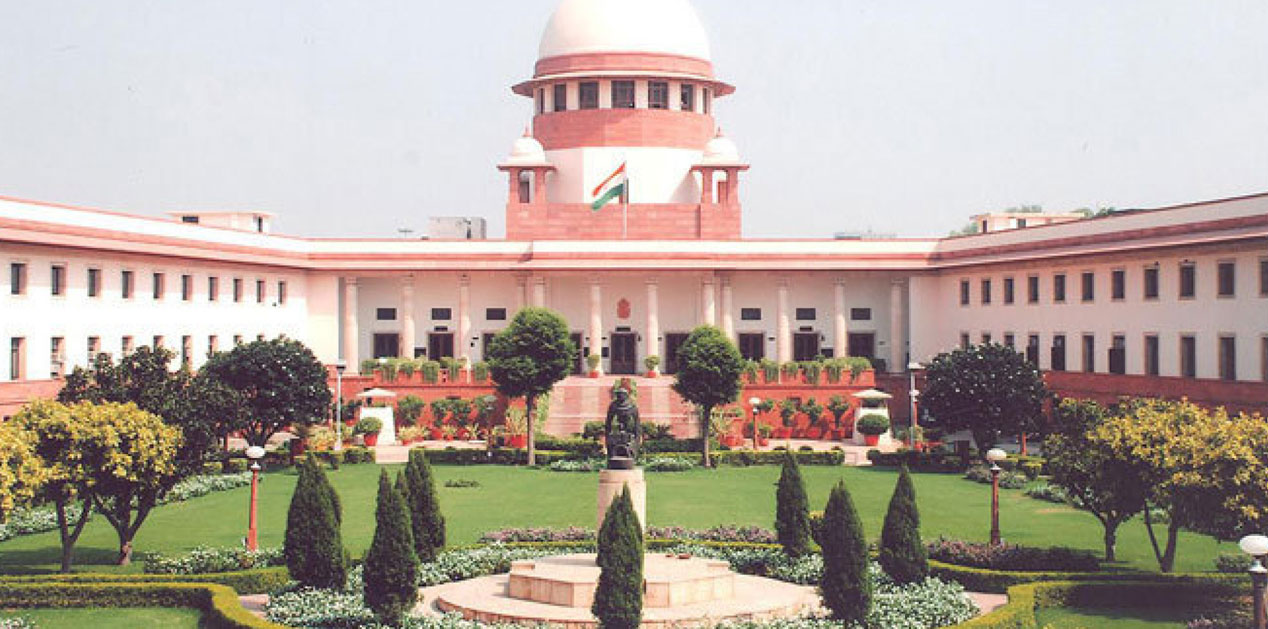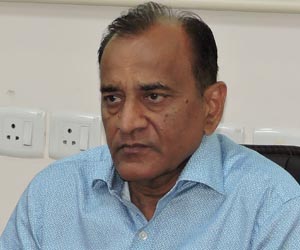When the Jammu & Kashmir High Court, nearly a year ago, held that the State enjoyed “sovereignty” because such status had been “guaranteed under Article 370” of the Constitution of India, Pakistan-based Dawn newspaper gleefully ran the report. Back home in India too, the verdict came as a booster to separatists in the Kashmir valley and perhaps even some mainstream political leaders who are never tired of using the term ‘autonomy’ as a euphemism for ‘sovereignty’. The High Court indicated that such sovereignty could not be challenged since it drew its strength and meaning from Article 370 of the Indian constitution. Only six months ago, the National Conference led by Farooq Abdullah and his son Omar Abdullah, both not just former Chief Ministers of the State but also former Union Ministers, had tabled a resolution in the State Assembly calling for the restoration of the pre-1953 position of the State. That status envisaged the exclusion of the jurisdiction of the Supreme Court, the Comptroller and Auditor-General and the Election Commission of India over the State. If this is not ridiculous enough, the pre-1953 situation would also seek to re-designate the Chief Minister as the State’s ‘Prime Minister’. That, in other words, was a form of sovereignty.
The National Conference had actually resurrected an old resolution which had been comprehensively rejected by the Government of India in 2000, as being wholly “unacceptable” because it demanded, inter alia, autonomy that was not permissible under the Constitution of India. There was politics in the recent revival of the resolution, given that the National Conference is currently out of power and is on the lookout to gain favours from hardliners in the valley as also to embarrass the coalition Government of the Peoples Democratic Party-Bharatiya Janata Party in the state. But there was more than politics: The demand represents a worrisome mindset that ought to have been abolished decades ago.
Thankfully, the euphoria in those sections of society in the Kashmir valley was to be short-lived. Last Friday (Dec. 16, 2016), the Supreme Court rejected the State High Court’s assertion and termed it “wholly incorrect”. It said, “It is clear that the State of Jammu & Kashmir has no vestige of sovereignty outside the Constitution of India.” The vestige of sovereignty is what those opposed to the idea of full integration of the State have been clinging on to. And for those who believe that they are “citizens of Jammu & Kashmir” and not India, the apex court underlined the fact that there was no reference to the term, ‘citizens’ for the people of the State. A two-judge Bench of the Supreme Court sternly reminded the J&K High Court (and by extension, all those who cared to listen) that the “residents of Jammu & Kashmir are first and foremost citizens of India”. Mark the word ‘residents’ as opposed to ‘citizens’ — the first is for the State and the second for the nation.
The apex court burst another balloon which separatists and other like-minded people have been floating for decades: The primacy of the Constitution of Jammu & Kashmir which, according to them, allowed them pretty much what they sought to do in playing around with the State’s ‘sovereign’ character. The Justices said that the people of the State “are governed first by the Constitution of India…”, and that the State’s Constitution was “subordinate to the Constitution of India”. Taking strong exception to the order of the Jammu & Kashmir High Court, the apex court Bench observed, “It is rather disturbing to note that various parts of the (High Court) judgement speak of the absolute sovereign powers of the State. It is necessary to reiterate that Section 3 of the Constitution of J&K, which was framed by the Constituent Assembly elected on the basis of universal adult franchise, makes a ringing declaration that the State of J&K is and shall be an integral part of the Union of India. And this provision is beyond the pale of amendment.” The contrast is interesting and a lesson for the proponents of sovereignty. The Jammu & Kashmir High Court emphasised on the non-amending character of Article 370 which, it claimed in its wisdom, provides for sovereignty, while the Supreme Court highlighted the integration of the State into the Union of India as beyond the pale of amendment.
Of course, those who tout the State’s Constitution as evidence that J&K has the status to be autonomous and sovereign, will not talk of the provisions that have finalised the integration of the State into India, and that are there in the very same Constitution of Jammu & Kashmir. The Supreme Court has left no one in doubt on the scheme of things vis-à-vis the State, when it said that the High Court had “gone out of its way to refer to a sovereignty which does not exist”. Indeed, while according importance to the State’s Constitution, the apex court made it clear that the J&K Constitution had come into being to further define the relationship between the State and the Union, but only within the parameters of J&K being an integral part of India. The apex court’s ruling, setting aside a dangerous verdict, should close the matter. Unfortunately, it will not, as both the separatists and those in mainstream politics who believe there are no red lines when it comes to furthering their divisive agenda, will continue to flog a dead horse in the hope that one day the horse will spring to life and they can ride it to glory.
The J&K High Court’s verdict had come, incidentally, on a non-political matter — much like the celebrated Kesavananda Bharati versus State of Kerala case of 1973, which essentially had as a bone of contention, land rights issues a religious muth in the State was seized with, but ended up in defining the primacy of the basic structural doctrine of the Constitution of India. It became a landmark verdict delivered by a 13-judge Constitution Bench, with the majority opinion upholding the inviolability of the Constitution’s basic tenets, besides the right of Parliament to limit property rights. While the verdict (with a wafer-thin majority of seven: six) did acknowledge that Parliament had the right to amend any part of the Constitution, it added that such an amendment could not seek to alter the “basic structure or essential features of the Constitution”. That this structure came to be destroyed only two years down the line with the imposition of Emergency, is another story. Still, the verdict has served Indian democracy well over the four decades gone by. Thanks to the ruling, it is today virtually impossible to play around with the Constitution’s basic formulation — and this includes the complete integration of J&K with the Union of India, without the State having any sort of ‘sovereignty’.
The J&K High Court was hearing a case involving the applicability of the Securitisation and Reconstruction of Financial Assets and Enforcement of Security Interest (SARFAESI) Act in the State. In its verdict, it said the State Legislature had “sovereign” powers to legislation with respect to laws that involve the rights of its permanent residents (or ‘citizens’). The High Court was referring to the existence of a State law, the Transfer of Property Act, which apparently conflicted which the Central SARFAESI Act. The High Court evidently held that the State law was supreme, since it was part of J&K’s ‘sovereign’ scheme of things. State Bank of India, the aggrieved party in the case, then moved the apex court for redressal, and got it in the form of the order of last Friday.
The Supreme Court did not, while hearing State Bank of India’s petition, speak of Article 370 — and naturally so, although many would argue that the roots of the mischief of ‘autonomy’ and ‘sovereignty’ lie in that provision, while others would say that the provision does the opposite: Helps integrate J&K with India in a holistic way. The issue before it had nothing to do with the controversial Article, which has been and is being debated by all ends of the political spectrum. But Article 370 remains contentious, and perhaps sooner or later the apex court will have to apply its mind to its validity or continuation or both.
In fact, the court is already seized with the matter. A two-judge Bench has agreed to examine the inviolability attached to Article 370. It is for the first time that the Supreme Court has taken up the issue and all eyes are on the verdict. But the legal process will take its time to play out, more so since many complexities are involved. It all began when the J&K High Court struck down reservations in the promotion of Government employees belonging to the Scheduled Castes/Scheduled Tribes. The reservation had led to the promotion of a number of employees since 2005. The High Court had last year held that there could be no benefit of reservation in promotion, and struck down Section 6 of the J&K Reservation Act of 2004 as “invidious and unconstitutional”. The aggrieved employees approached the Supreme Court, which stayed the High Court order.
The reason why the Supreme Court has taken upon itself the task of examining the inviolability of Article 370 is that the High Court had, in striking down reservations, commented on this particular provision. The High Court had held that “Article 370, notwithstanding its title showing it as a ‘temporary provision’, is a permanent provision of the Constitution. It cannot be abrogated, repealed or even amended, as mechanism provided under Clause 3 of Article 370 is no more available. Furthermore, Article 368 (the amending power of Parliament) cannot be pressed into service in this regard, inasmuch as it does not control Article 370…”
There are two issues of discord here. The first is that the High Court needlessly took it upon itself to interpret a deeply complicated constitutional issue that should be best left to the sagacity of either Parliament or the apex court, or both. The second is that the inviolability of Article 370 was not, strictly speaking, the subject before the Division Bench of the J&K High Court, to be decided upon. Clearly, therefore, the High Court had over-stepped its jurisdiction. While staying the order, the Supreme Court has agreed to make the Union Government a party to the proceedings. This opens up fresh possibilities of a definitive decision on the inviolability of Article 370.
Interestingly, the Kesavananda Bharati case has been invoked to question Article 370. The petitioners in the apex court have maintained that the provision is not even part of the “basic structure of the Constitution of India” and, therefore, does not have immunity from being amended through the use of the amending enabler in Article 368.
But can Article 370 be amended (or abrogated)? While the apex court will now determine the inviolability, theories continue to float regarding the possibilities. Clause 3 of the Article clearly holds that the President of India may, by public notification, declare that Article 370 ceased to be operational, but only on the recommendations of a new Constituent Assembly of Jammu & Kashmir. On the other hand, Parliament can amend this provision, using the enabling provision of Article 368. This would involve a constitutional amendment which, given the numbers paucity the Government has in the Rajya Sabha, may not be possible. Summoning of a joint session of Parliament to get around the numbers issue is out of the question because constitutional amendments, like in the case of money Bills, cannot be achieved through joint sittings. It is evident that the Opposition will not allow the Government to amend, let alone abrogate, Article 370, through an Act of Parliament.
The politics of Article 370 is, of course, no less complex than its legality. Soon after Narendra Modi became Prime Minister in May 2014, his Minister in the Prime Minister’s Office (PMO), Jitendra Singh, set the cat among pigeons by declaring his support for any possible review of the continuation of Article 370 in Jammu & Kashmir. Even earlier, in fact on the day he took charge of his new responsibilities, Singh said the Government had begun the process of reviewing Article 370. Later, when the media quoted him on the issue where he was reported to have invoked Prime Minister Modi on the issue, the Minister of State clarified that he had been “misquoted”. He, however, maintained that a review of Article 370 was part of the BJP’s manifesto and agenda.
The Congress Party’s position is diametrically opposite. Its leader Manish Tewari, for instance, had responded to Singh’s remarks by claiming that the provision could be amended only through the consent of the J&K Constituent Assembly, and such a Constituent Assembly could not be “resurrected”. The Congress also believes that the BJP was seeking to play ‘parochial politics’ by seeking to divide the State on communal lines (making it seem that one religious section of the population favoured the amendment while the other opposed it). But the Congress and those like the National Conference have not been able to offer convincing answers on how precisely Article 370 has helped over the decades, the process to integrate the State into the Union of India. There are many who believe to the contrary. There is also another issue: Should Article 370, which clearly has a ‘temporary’ nature attached to it, become so inviolable that it cannot be tampered with, for eternity?
For the ruling BJP, Article 370 is problematic, though it cannot just wish the provision away. Syama Prasad Mookerjee, founder of the Bharatiya Jana Sangh (precursor to the Bharatiya Janata Party) gave his life to the cause of Kashmir’s full integration with India without strings attached (such as Article 370). He had strongly opposed a separate Constitution and a separate flag for the State of Jammu & Kashmir. And, so, although the BJP today is part of a coalition Government in the State with the Peoples Democratic Party which supports the continuation of Article 370, the national party remains committed to the goal of amending (or abrogating) Article 370. It would be naïve to expect the Union Government to take proactive steps at this moment in addressing the issue. In any case, since the Supreme Court is already hearing the matter of the Article’s inviolability, the Centre need not muddy the waters further. Moreover, the Union will have ample opportunities to present its opinion on the issue before the apex court, since it has been made a party to the case. It’s basically a wait-and-watch game for all concerned.
(The writer is Opinion Editor of The Pioneer, senior political commentator and public affairs analyst)
Published Date: 20th December 2016, Image Source: http://www.supremecourtofindia.nic.in











Post new comment